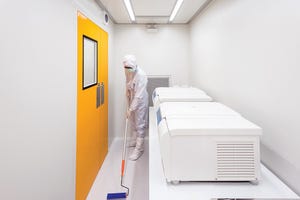January-February 2024 Featured Report
Biopharmaceutical manufacturers often implement corrective and preventive actions (CAPAs) as a mitigation strategy to address deviations based on root causes identified in investigations of process failures. CAPA implementation frequently is followed by effectiveness checks. The effectiveness of a CAPA is demonstrated by ensuring that a specific parameter can meet acceptable requirements.
If a monitored parameter for ensuring CAPA effectiveness does not follow any specific data distribution, or if it reports results as pass or fail, then the statistical approach for selection of sample sizes to ensure reliability of the effectiveness check will not necessarily be straightforward. Therefore, herein we detail one such appropriate statistical approach to calculate sample size: “Reliability demonstration tests” (RDTs) can be used to verify whether a product or process has met a certain reliability requirement at a stated statistical confidence level when the underlying data distribution is unknown.
A number o...
Amid heightened concern over cross-contamination during biopharmaceutical manufacturing, regulators are turning their focus increasingly to risk management and mitigation. Health authorities around the world are taking steps to ensure that biomanufacturers follow the principles of quality risk management (QRM) to address cross-contamination risk and ensure patient safety. A number of significant programs, guidelines, and regulatory revisions have emerged in the past year that indicate a trend toward adoption of QRM and risk-based approaches in the manufacturing of medicinal products. One priority for regulators is to address the challenge of product shortages that result from process and product-quality problems, such as substandard practices at manufacturing plants and quality defects in finished products (
1
). In the year ahead, the focus on QRM will intensify. Regulators are likely to take further steps — through guidelines, inspections, warning letters, and so on — to safeguard patients.
EU Annex 1 a...
The steps involved in manufacturing pharmaceutical products require rigorous processes to ensure the safety of patients. One important such process is cleaning validation — a critical element in current good manufacturing practice (CGMP). The US Food and Drug Administration (FDA) defines the purpose of cleaning validation as demonstrating that a “particular cleaning process will consistently clean the equipment to a predetermined standard” (
1
). And according to the Pharmaceutical Inspection Co-Operation Scheme (PIC/S), “cleaning validation is documented evidence that an approved cleaning procedure will reproducibly remove the previous product or cleaning agents used in the equipment below the scientifically set maximum allowable carryover level” (
2
).
Given that many manufacturing facilities often use the same equipment to make more than one drug substance/product, companies must have strategies that eliminate risks of cross-contamination. Without adequate cleaning validation in place, drug companies r...
In recent years, global pharmaceutical organizations have adapted to new rules established by agencies such as the US Food and Drug Administration (FDA) and the European Medicines Agency (EMA). Some such regulations relate to data and focus on subjects such as computerized systems, electronic records and signatures, and attributable, legible, contemporary, original, and accurate (ALCOA+) standards. Data governance and data integrity are critical for compliance, requiring companies to maintain paper and electronic records.
Quality control (QC) laboratories generate many records that are fundamental to assuring the quality and safety of pharmaceutical products. A key challenge for the pharmaceutical industry is guaranteeing the integrity of records that are generated during production processes, both in electronic and paper format. The FDA is one of the primary regulatory bodies that has set a standard for data integrity in the pharmaceutical industry.
In 2013 and 2014, the agency made a significant number ...









